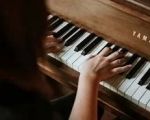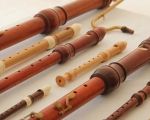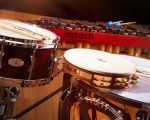Understanding the World of Musical Percussion Instruments: Types, Benefits, and Usage
- 1 - Types of Percussion Instruments
- 2 - How Percussion Instruments Benefit Musicians
- 3 - Learning to Play Percussion Instruments
- 4 - Why Choose Percussion Instruments
- 5 - Exploring Popular Percussion Instruments
1 - Types of Percussion Instruments
Musical percussion instruments are an essential part of almost every musical genre, offering a rhythm and texture that complements the melodic elements of music. There are two main categories of percussion instruments: unpitched and pitched. Unpitched instruments, like drums and cymbals, produce sounds without a definite pitch. Pitched percussion instruments, such as marimbas and xylophones, produce notes with specific pitches.
Some of the most popular percussion instruments include:
- Drums: These are the heartbeat of many musical compositions. From the bass drum to snare drums, the variety of drums available is astounding.
- Cymbals: Often used to emphasize certain moments in music, cymbals can create dramatic effects, adding a sense of energy to a performance.
- Tambourine: This small percussion instrument is famous for its jingling sound, making it a favorite for both beginners and professionals alike.
- Marimba: A type of xylophone, the marimba has a rich, resonant tone that makes it suitable for classical music as well as modern performances.
2 - How Percussion Instruments Benefit Musicians
Playing percussion instruments offers numerous benefits to musicians. Not only do they improve timing, rhythm, and coordination, but they also provide a therapeutic outlet for self-expression. Percussion is often seen as a foundation for understanding other musical elements. Musicians who master percussion instruments often have an edge in their overall musicianship.
Some of the key benefits of playing percussion instruments include:
- Improved Rhythm and Timing: Percussion instruments are all about keeping time. Mastery of these instruments can drastically improve a musician’s sense of timing.
- Physical Coordination: Many percussion instruments require the use of multiple limbs, enhancing a player's coordination and multitasking ability.
- Emotional Expression: Percussion allows for emotional expression through dynamic contrasts, tempo variations, and rhythmic changes.
3 - Learning to Play Percussion Instruments
If you're new to percussion, don't be intimidated by the variety of instruments available. Starting with a simple tambourine or djembe drum can help you build your rhythmic foundation. Once you're comfortable with basic rhythms, you can progress to more complex instruments like the marimba or vibraphone.
Learning to play percussion can be done in a variety of ways, from taking private lessons to using online resources. Many music schools offer percussion courses, or you can find tutorials on platforms like YouTube. Whatever your approach, the key to success is consistent practice and patience.
4 - Why Choose Percussion Instruments
Percussion instruments are highly versatile and provide an exciting, engaging musical experience. They are often easier to start playing than other instruments since they do not require the mastery of complex music theory. Their broad range of sounds and rhythms means they can be integrated into almost any type of music, from classical to jazz to contemporary styles.
For musicians who thrive on energy and movement, percussion instruments are the perfect choice. Their dynamic and physical nature makes them particularly appealing for those who want to experience music in a hands-on, active way.
5 - Exploring Popular Percussion Instruments
Now that we’ve covered the basics, let's dive deeper into some of the most popular percussion instruments around the world:
- Snare Drum: A staple in marching bands and drum kits, the snare drum is recognized for its sharp, crisp sound. It’s often used in rock and pop music.
- Congas: Originating from Cuba, congas are a set of hand drums that provide a deep, resonating tone, often used in Latin and Afro-Cuban music.
- Vibraphone: Similar to a marimba, but with a metallic sound due to its resonators, the vibraphone is often featured in jazz and orchestral performances.
Each of these instruments has its unique role, and by exploring them, you’ll gain a deeper appreciation for the diversity and importance of percussion in music.
If you’re looking to explore the world of musical percussion instruments further or purchase an instrument, there are many excellent options available. Whether you’re a beginner or an experienced musician, percussion instruments are a fantastic addition to any musical journey.








